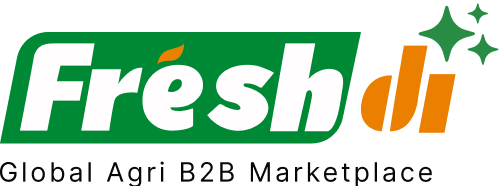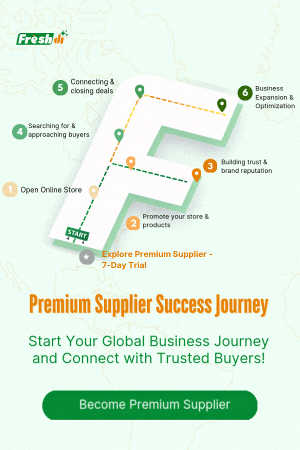Introduction – Delving into Global’s Reputation for Quality Seafood
When it comes to sourcing seafood, “Global” isn’t just a location—it’s a reputation. The global seafood industry is riding a wave of innovation, tradition, and environmental advantage that makes it a hotspot for high-quality seafood production. From the icy fjords of Norway to the integrated rice-fish farms in Asia, producers are harnessing nature and technology to deliver premium products to markets worldwide.
Why does this matter to you as a buyer or business? Because understanding what goes into top-tier seafood—like climate, water quality, and certifications—can mean the difference between sourcing standard product and bringing exceptional goods to your customers. Let’s dive into why “Global” seafood is making such a splash.
Environmental Advantages That Elevate Quality
-
Pristine Waters & Ideal Climate: Think cold, clean waters like those in Norway or Chile—these environments are perfect for cultivating species like salmon and trout. Clean water minimizes disease, boosts flavor, and ensures sustainability.
-
Healthy Aquatic Ecosystems: In aquaculture, water quality and biodiversity aren’t just buzzwords—they directly impact the health and taste of the seafood. Farming practices that protect the ecosystem yield seafood that’s not only better for the planet but also healthier on the plate.
Traditions That Make a Difference
-
Rice-Fish Farming: This ancient method, still used in countries like China and Indonesia, integrates fish and rice farming. It’s the ultimate multitasking method—producing two crops while enhancing biodiversity and maintaining soil and water health.
-
Artisanal Fishing: Small-scale, traditional techniques used by coastal communities often produce higher-quality fish due to selective harvesting and minimal environmental impact.
Aquaculture Innovation at Full Throttle
-
Smart Farming Tech: IoT and machine learning are transforming fish farms. Real-time environmental monitoring ensures fish are raised in optimal conditions, boosting yield, quality, and traceability.
-
Sustainability is the New Standard: Regenerative aquaculture is gaining ground. These practices don’t just minimize harm—they actively improve the environment while producing top-tier seafood.
Industry Shifts You Need to Know
-
Aquaculture Takes the Lead: In 2022, aquaculture production surpassed wild catch for the first time—57% of global seafood now comes from farms. Controlled environments mean better consistency, sustainability, and safety.
-
Global Growth on the Horizon: Experts predict that seafood will soon overtake poultry as the world’s top animal protein source. That means opportunity—and competition—for businesses that want to stay ahead.
Defining & Verifying Seafood Excellence in Global
So, what exactly makes seafood “high-quality”? It’s not just about freshness or taste. Certifications, regional standards, and sourcing practices all come into play.
Key Quality Indicators to Look For
-
Certifications: Top labels include MSC (Marine Stewardship Council), ASC (Aquaculture Stewardship Council), and BAP (Best Aquaculture Practices). These verify that seafood is responsibly sourced, safe, and sustainable.
-
Traceability: Can you track the seafood from sea to plate? Traceability ensures transparency and builds trust.
-
Sustainability Practices: Look for suppliers who prioritize low-impact fishing, ecosystem regeneration, and ethical labor.
Regional Variations in Standards
-
Europe & North America: These regions lead the way in sustainability and labor ethics. Certifications from these areas often carry more weight in premium markets.
-
Asia: Focus tends to lean more toward food safety and yield. While still producing high-quality seafood, the lack of robust environmental certifications can affect perception.
Certification Confusion and Consumer Trust
Not all certifications are created equal. Some—like the MSC—have faced criticism for lax enforcement. This inconsistency can create skepticism among buyers and consumers.
Freshdi’s platform helps cut through the confusion by showing RFQ (Request for Quotation) trends that prioritize verified quality attributes and matching suppliers accordingly. It’s like having a smart filter for your sourcing decisions.
The Push for Global Standardization
-
The Global Seafood Alliance has seen an 18% uptick in certified producers, signaling a global shift towards unified quality.
-
The EU’s Green Claims Directive is also working to standardize environmental claims, which will make it easier for buyers to compare apples to apples.
Top 7 Verified Seafood Suppliers in Global – Leaders in Quality
Looking for trusted names in the seafood business? These seven suppliers stand out for their export performance, certifications, and glowing feedback from Freshdi users.
-
Agrifood Commodities SL
Based in Spain, this supplier is known for its certified, sustainably harvested seafood. They specialize in fresh and frozen varieties with a strong European market presence. -
Hung Ca Company Ltd
A Vietnamese powerhouse in pangasius and seafood exports, Hung Ca balances traditional farming with traceability and modern aquaculture standards. -
Yemen SAI Prime for Exporting
One of the key players from the Middle East, this supplier offers premium-quality packaged seafood, with a focus on freshness and compliance. -
Ocean Treasure
Known for its global reach, Ocean Treasure provides a wide variety of seafood with strict adherence to EU and US quality certifications. -
Matr Consulting Private Limited
This Indian supplier emphasizes sustainable sourcing and strong quality control—ideal for buyers in need of both volume and certification. -
Amber Frozen FOODS
Specializing in frozen seafood exports, Amber Frozen FOODS is a go-to for buyers looking for consistency and scalability. -
Interfish Company Limited
With a strong base in Asia, Interfish offers high-quality aquatic products, often with ASC or HACCP certifications.
Dynamic Ranking Note: Rankings on sourcing platforms like Freshdi are dynamic. Suppliers featured in the “Top of the Month” or “Supplier of the Quarter” categories may shift based on RFQ volume, buyer feedback, and recent certifications.
Market Navigation – Quality Demand Dynamics & Consumer Insights
The global seafood market is evolving fast. Consumers care more about where their food comes from, how it was harvested, and whether it’s safe for both them and the planet.
Rising Demand for Premium Seafood
More buyers are prioritizing:
-
Certified Products: ASC and MSC labels are increasingly non-negotiable for retail and foodservice sectors.
-
Sustainability & Ethics: Consumers want to know their seafood isn’t contributing to overfishing or poor labor standards.
-
Traceability: QR codes on packaging that trace seafood back to the source are becoming a selling point.
How Freshdi Helps You Stay Ahead
Freshdi’s integrated market insights give you:
- Real-time RFQ trends showing what other buyers are asking for.
- Supplier verification tools so you know who’s legit.
- A growing database of trusted, rated suppliers across the globe.
Conclusion – Final Thoughts on Quality Sourcing
Sourcing quality seafood from global markets isn’t just about finding the lowest price—it’s about aligning with suppliers who meet your standards, certifications, and sustainability goals.
Global seafood producers offer a rich mix of tradition, innovation, and environmental advantage. Whether you’re a food processor, distributor, or retailer, choosing the right partner can elevate your brand and customer satisfaction.
Seafood Buyer’s Checklist
Before selecting a supplier, ask yourself:
- ✅ Do they have internationally recognized certifications?
- ✅ Can their product be traced from source to sale?
- ✅ Are they featured on verified platforms like Freshdi?
- ✅ Do their products meet your country’s import regulations?
- ✅ Have they been rated highly by other buyers?
The Future of Seafood Sourcing
Looking ahead, the seafood sector will continue to grow—especially in farmed aquaculture. With increasing regulatory oversight and consumer awareness, suppliers who prioritize sustainability and quality will rise to the top.
How Freshdi Empowers Buyers
Platforms like Freshdi are changing the game by:
- Providing transparent supplier profiles.
- Offering dynamic rankings based on real-time buyer activity.
- Helping you match with suppliers that align with your specific RFQ needs.
Whether you’re sourcing shrimp from Vietnam or salmon from Norway, Freshdi helps you connect with the right people—and the right product.
FAQs
1. What certifications should I look for when sourcing seafood?
Look for MSC, ASC, BAP, and HACCP certifications. These ensure sustainability, food safety, and ethical practices.
2. How can I verify a seafood supplier’s credibility?
Use sourcing platforms like Freshdi to check supplier ratings, certifications, and RFQ fulfillment history.
3. Why is aquaculture seen as more sustainable than wild fishing?
Aquaculture provides controlled environments that reduce overfishing, support ecosystem regeneration, and ensure consistent supply.
4. What’s the main difference between Asian and Western seafood standards?
Western regions often emphasize sustainability and labor ethics, while Asian markets focus more on food safety and high-yield practices.
5. How do I find the top seafood suppliers for my business?
Check dynamic rankings on platforms like Freshdi that reflect real-time performance, certifications, and buyer feedback.
References
- Rice-Fish Farming Systems – Wikipedia
- IoT in Aquaculture – arxiv.org
- Global Aquaculture Trends – SeafoodSource
- Seafood Market Projections – SeafoodSource
- Sustainability Certifications – MDPI
- Critique of MSC – Springer
- Global Seafood Alliance Annual Report
- EU Green Claims Directive – Springer
- UN Tariffs Impact – Reuters
- Financing Sustainable Seafood – Reuters
- Slow Food & Climate Change – Time


